A lot of schools and organizations use Microsoft Teams for collaboration and communication, especially right now. It’s one of the best apps out there for this purpose, with many features to facilitate communication.
But sometimes it becomes important to restrict this ease and level of communication, specifically private communications. The situation can be all too common, like when someone starts abusing the features, or it goes against school/ company policy. Private chats are one such feature that can become a nuisance for many schools and organizations. And there is no other option left but to disable it.
Although it might seem like an extreme step, it becomes necessary. Fortunately, Microsoft Teams has provisions to achieve this feat rather easily. And students/ employees will have channel communication, so it’s not like you’ll be restricting all communication completely.
Disable Private Chat in Microsoft Teams
You can completely disable private chats for the whole organization in Microsoft Teams, i.e., no users of your organization/ school will have the ability to have private chats with any other users. The ‘Chat’ tab for the whole organization will simply disappear. It’s useful for instances when your organization policy restricts private communication.
The other option that provides more flexibility is to disable private chats for a subset of users and not the whole organization. This is the more practical choice for schools that’d like to restrict private communication for all students and not teachers, or only the younger students.
Note: Only people with admin access can alter these settings and disable chat in Microsoft Teams.
Disable Private Chats for the Entire Organization
Go to admins.teams.microsoft.com and log in with your Microsoft account. The admin dashboard will open. From the navigation menu on the left, click on ‘Messaging Policies’.
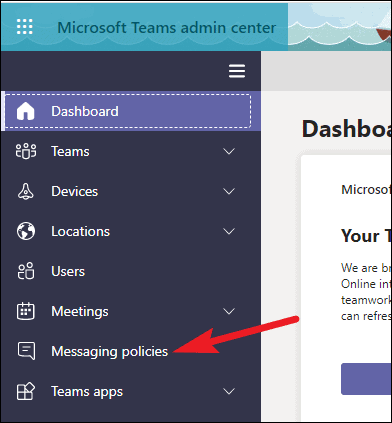
To alter the policy for the entire organization, click on the ‘Global (Org-wide default)’ option.
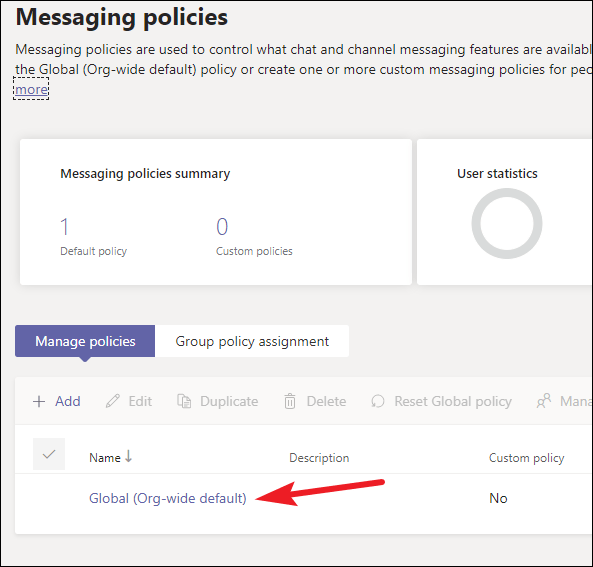
Then, find the option for ‘Chat’ from the list and turn off the toggle to disable it.

Then, click on the ‘Save’ button at the bottom to save the changes to the global policy.

The policy can take anywhere from a few minutes to a few hours to take effect. And once it does, the ‘Chat’ tab will disappear from the navigation bar on the left in Microsoft Teams for everyone.

Disable Private Chats for Some Users
To disable private chats for only a subset of users in the organization, go to admin.teams.microsoft.com and open Messaging policies from the navigation menu on the left.
The existing messaging policies, default, and custom (if any), will open. Click on the ‘Add’ option to create a new custom policy.
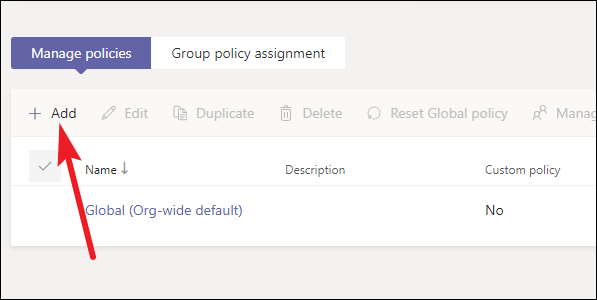
The screen for the policy settings will open. Enter the name and a description (optional) for the policy that will make it easy to keep track of it among all the custom policies.

Then, go to ‘Chat’ and turn the toggle off to disable chat. This will keep the rest of the settings same as for other users (if you use default settings for everyone). Then, click the ‘Save’ button.
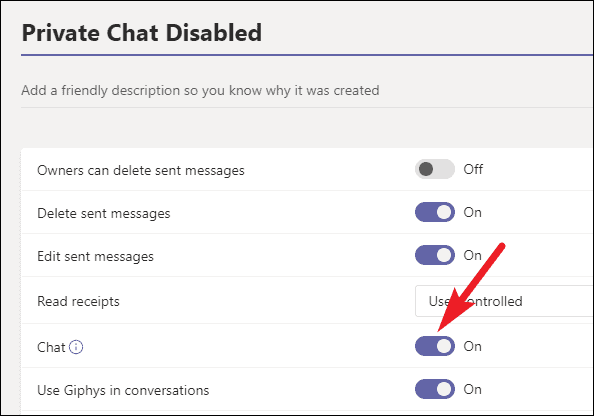
After creating the policy, it’s time to assign it to the users you want to apply it to. After saving the policy, you will be automatically back on the Messaging policies screen. Go to your newly created policy, and click on the ‘check’ option to its left to select it.
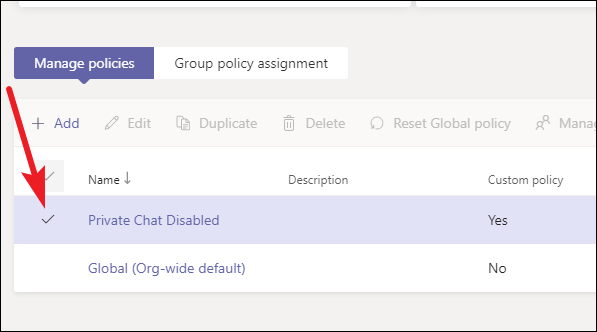
Then, click on the ‘Manage Users’ option.
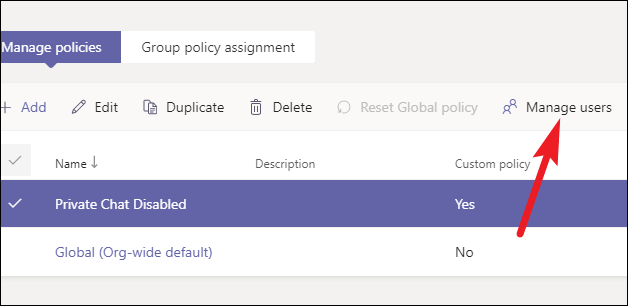
The screen for managing users will appear on the right. Search and add the names of the users you want to apply the policy to.
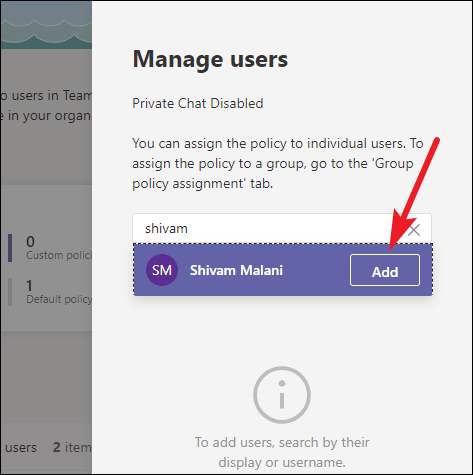
Then, click on the ‘Apply’ button. The custom policy will now be applicable for these users, and they won’t have access to the private ‘Chat’ tab in Microsoft Teams any longer.
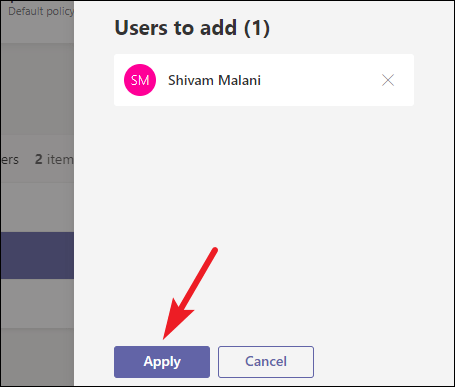
Disable Chat in Meetings on Microsoft Teams
Sometimes disabling private chat is not enough. Meeting chat is another place that’s a classic example of features that can be misused in Microsoft Teams, especially by students. It can even lead to the disruption of classes. And to control the mayhem, the only option left is to restrict communication in the meeting as well. Like private chats, to disable this setting, you need admin access to your organization.
Go to admin.teams.microsoft.com and login with your admin account. Then, click on ‘Meetings’ on the navigation bar on the left. The further options available for meetings will expand underneath.
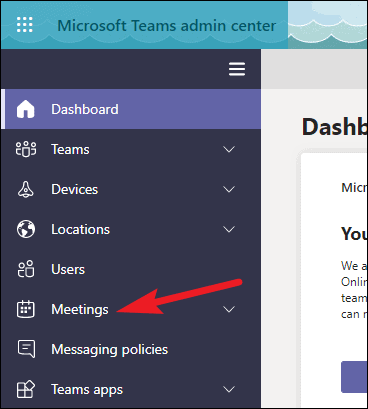
Click on ‘Meeting Policies’ from these options.
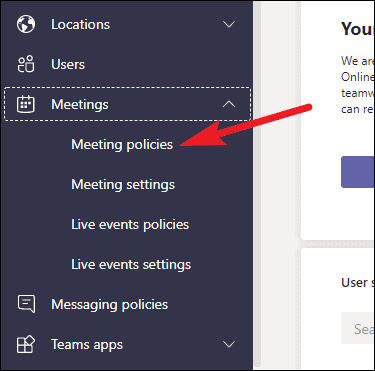
The page for meeting policies will open. Go to ‘Global (Org-wide default)’.
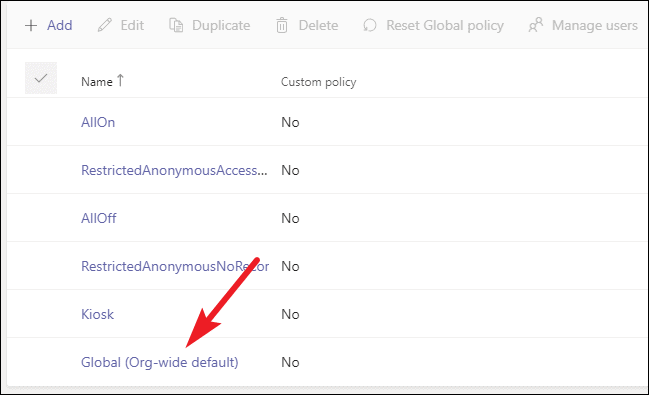
Then scroll down to the section for ‘Participants & guests’. And click on the drop-down menu next to ‘Allow chat in meetings’. Select ‘Disabled’ from the list.
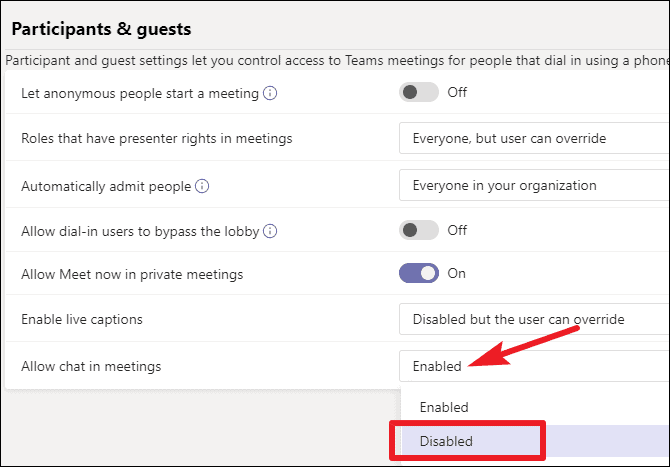
Then, click on the ‘Save’ option to apply the changes.

The setting takes some time (anywhere from a few minutes to a few hours) to take effect. If it hasn’t taken effect even after some time, restarting Microsoft Teams helps.
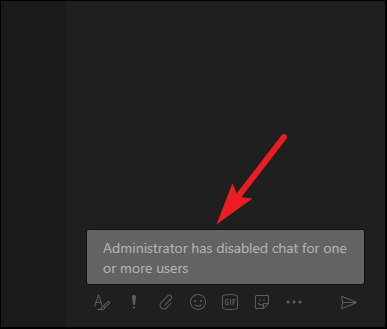
Note: This only disables meeting chat for meetings held with the ‘Meet Now’ option, not channel meetings. Also, you cannot turn off meeting chats for specific meetings only.
Disabling chat in Microsoft Teams is an extreme step, considering the many uses it offers. It can be really helpful for communication, especially private and meeting chats. But, when the uses start to become outweighed by the problems it’s creating, there is no other option left but to go to extremes and disable these wonderful features.

